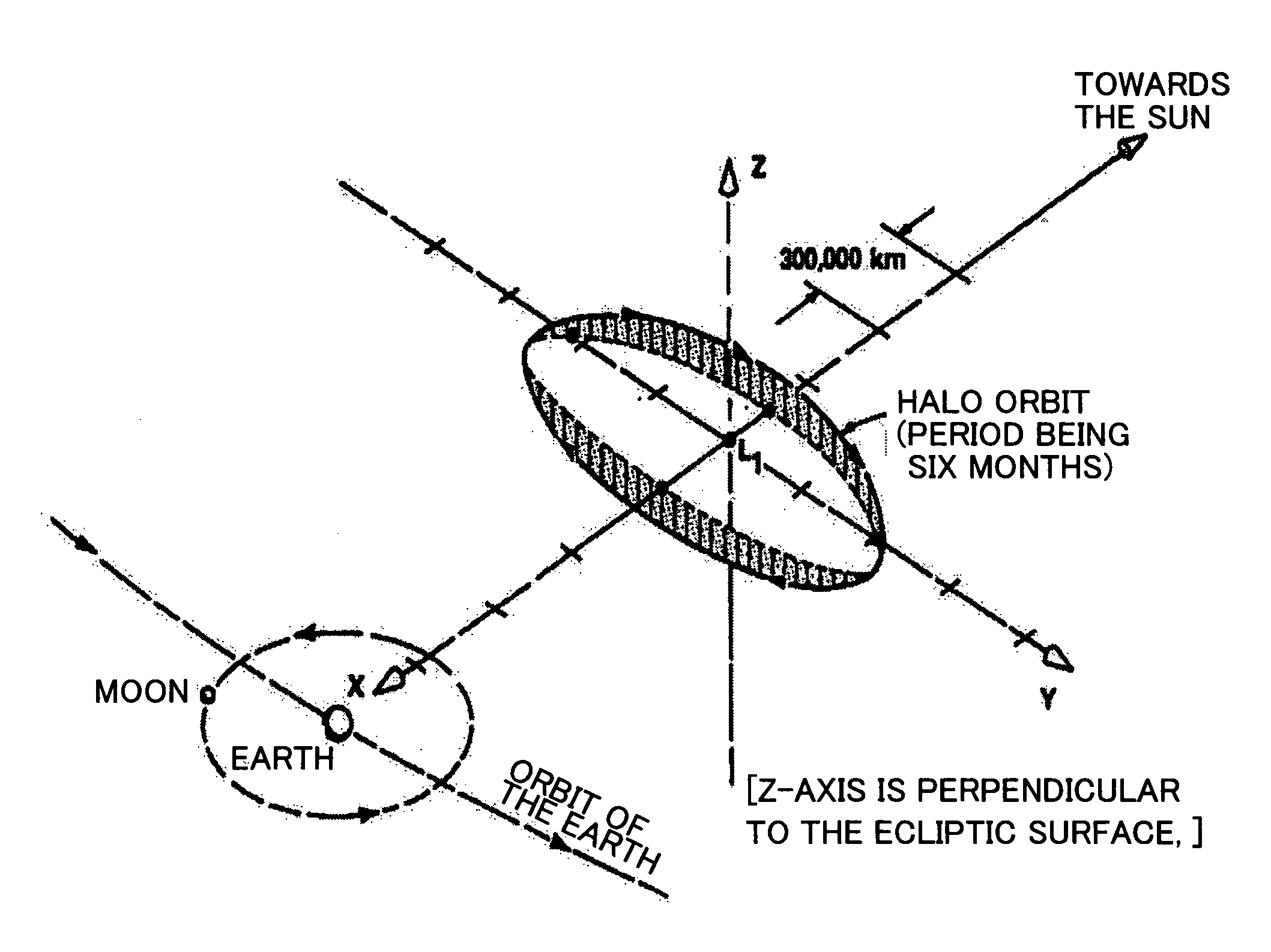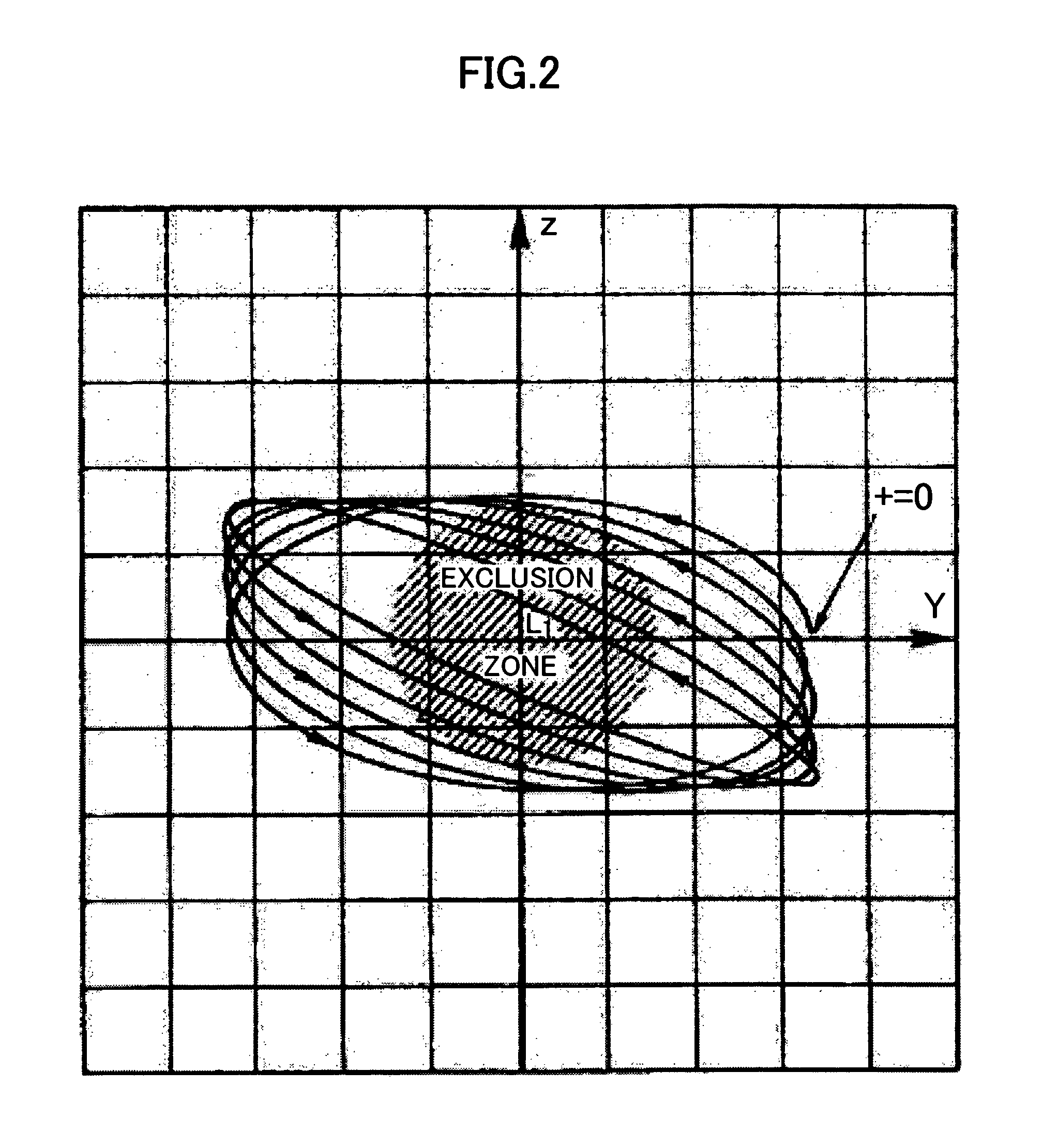Method for designing an orbit of a spacecraft
a spacecraft and orbit design technology, applied in the field of spacecraft orbit design, can solve the problems of inability to maintain the position of the spacecraft, large orbit, and inability to achieve the effect of avoiding the abandonment of most merits,
- Summary
- Abstract
- Description
- Claims
- Application Information
AI Technical Summary
Problems solved by technology
Method used
Image
Examples
Embodiment Construction
[0029]The preferred embodiments of the invention will be described in detail below with reference to the attached drawings.
[0030]Take, as an example, a system comprising two celestial bodies (for example, the Earth and the Moon) having a comparatively large mass, and a body having a comparatively small mass (for example, artificial satellite) where both bodies revolve around the bury-center, a center of masses of the two large bodies system, in a circular orbit, and the small body resides close to the former body. It has been known that there are five equilibrium points along the line connecting the two bodies where the small body can be stationary relative to the other two larger bodies. They are known as Lagrange points, and called Lagrange points L1, L2, . . . , L5. FIG. 1 illustrates five Lagrange points with particular reference to their positions relative to the two larger bodies. As shown in the figure, the points L1 to L3 are located on a line connecting the two celestial bo...
PUM
 Login to View More
Login to View More Abstract
Description
Claims
Application Information
 Login to View More
Login to View More - R&D
- Intellectual Property
- Life Sciences
- Materials
- Tech Scout
- Unparalleled Data Quality
- Higher Quality Content
- 60% Fewer Hallucinations
Browse by: Latest US Patents, China's latest patents, Technical Efficacy Thesaurus, Application Domain, Technology Topic, Popular Technical Reports.
© 2025 PatSnap. All rights reserved.Legal|Privacy policy|Modern Slavery Act Transparency Statement|Sitemap|About US| Contact US: help@patsnap.com



